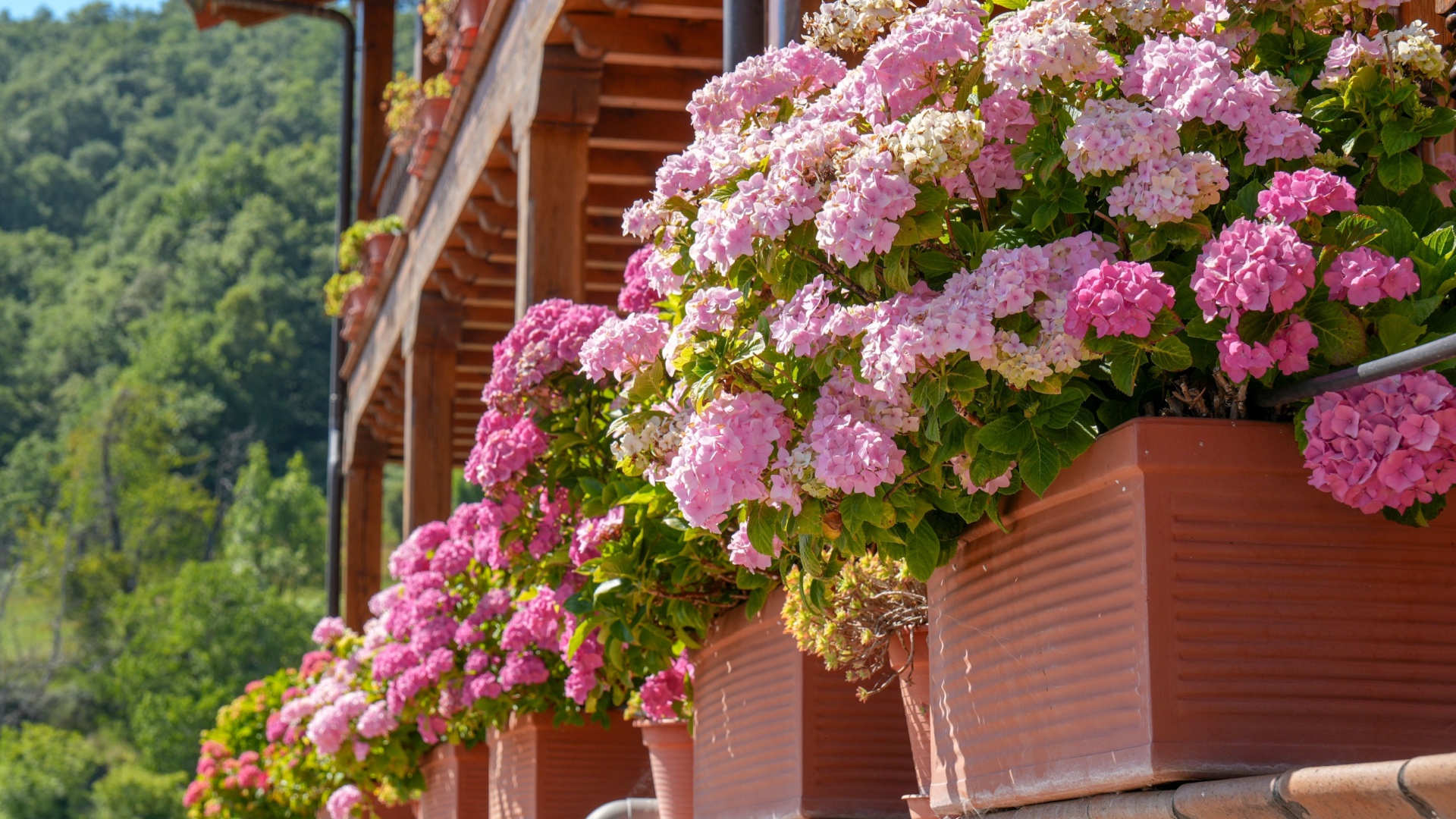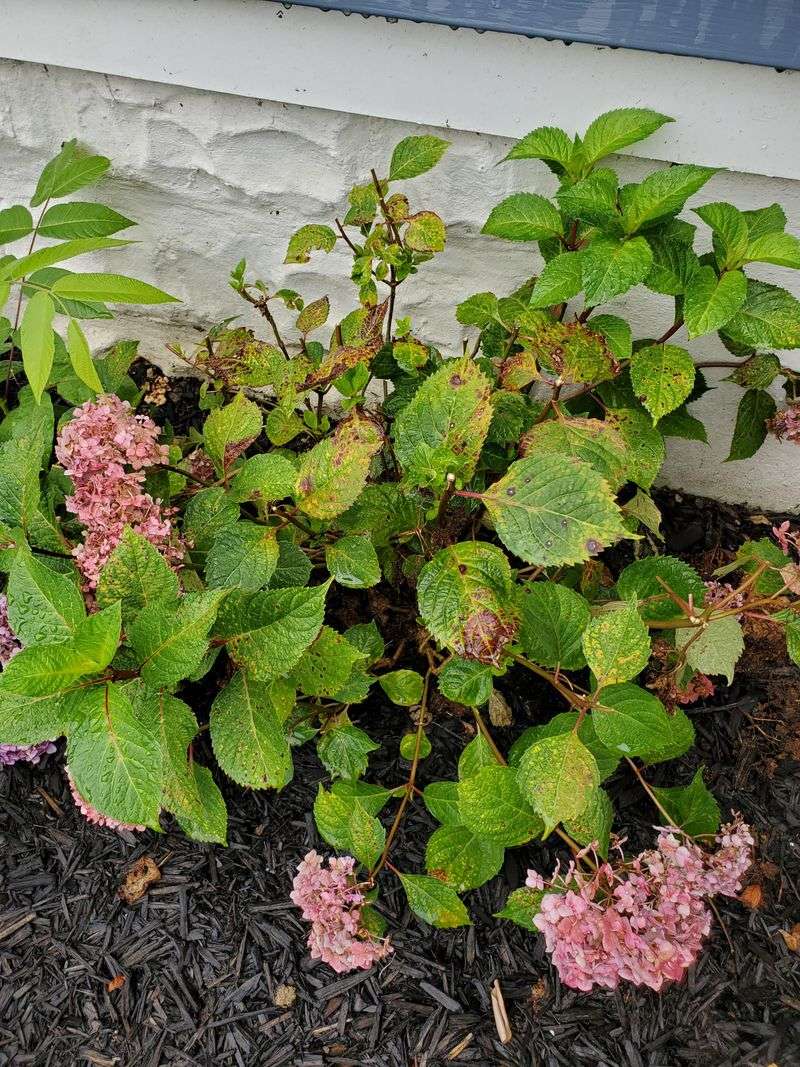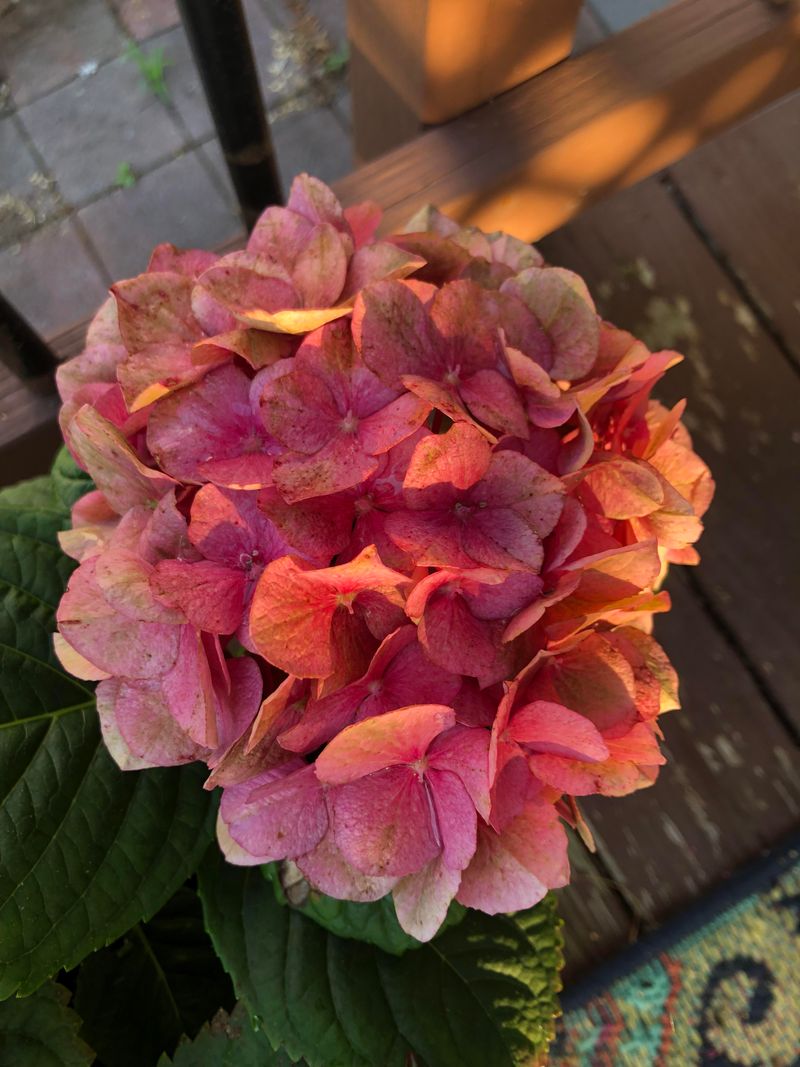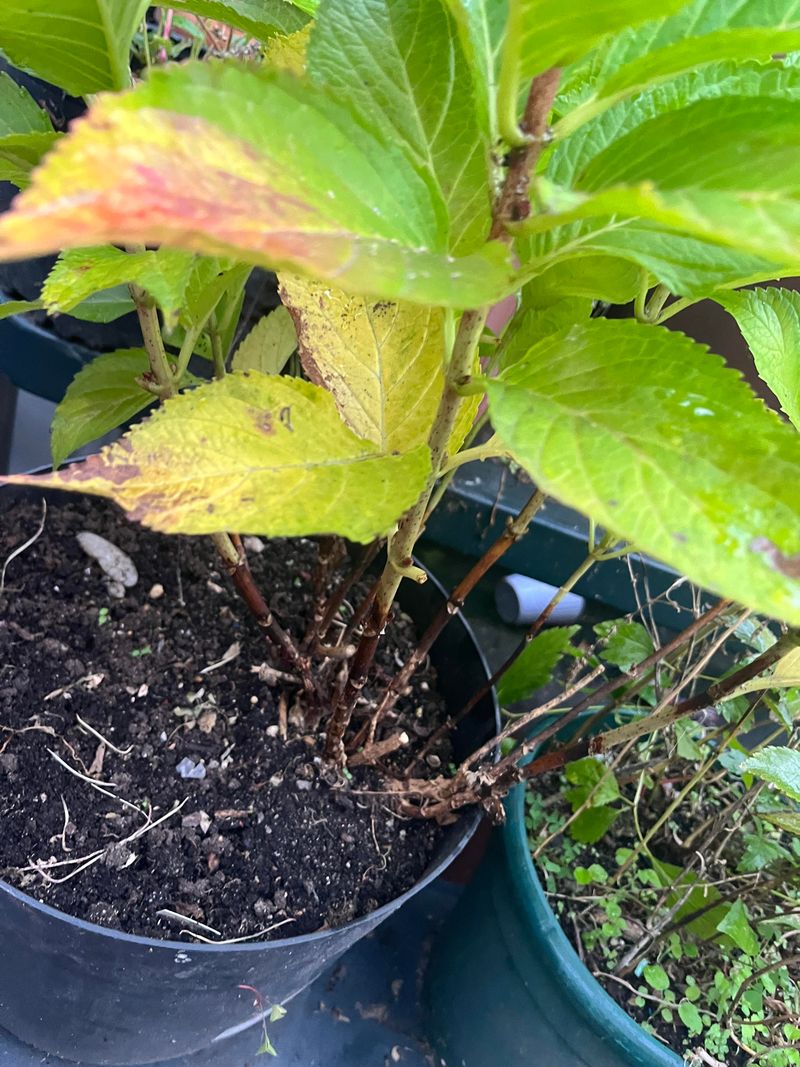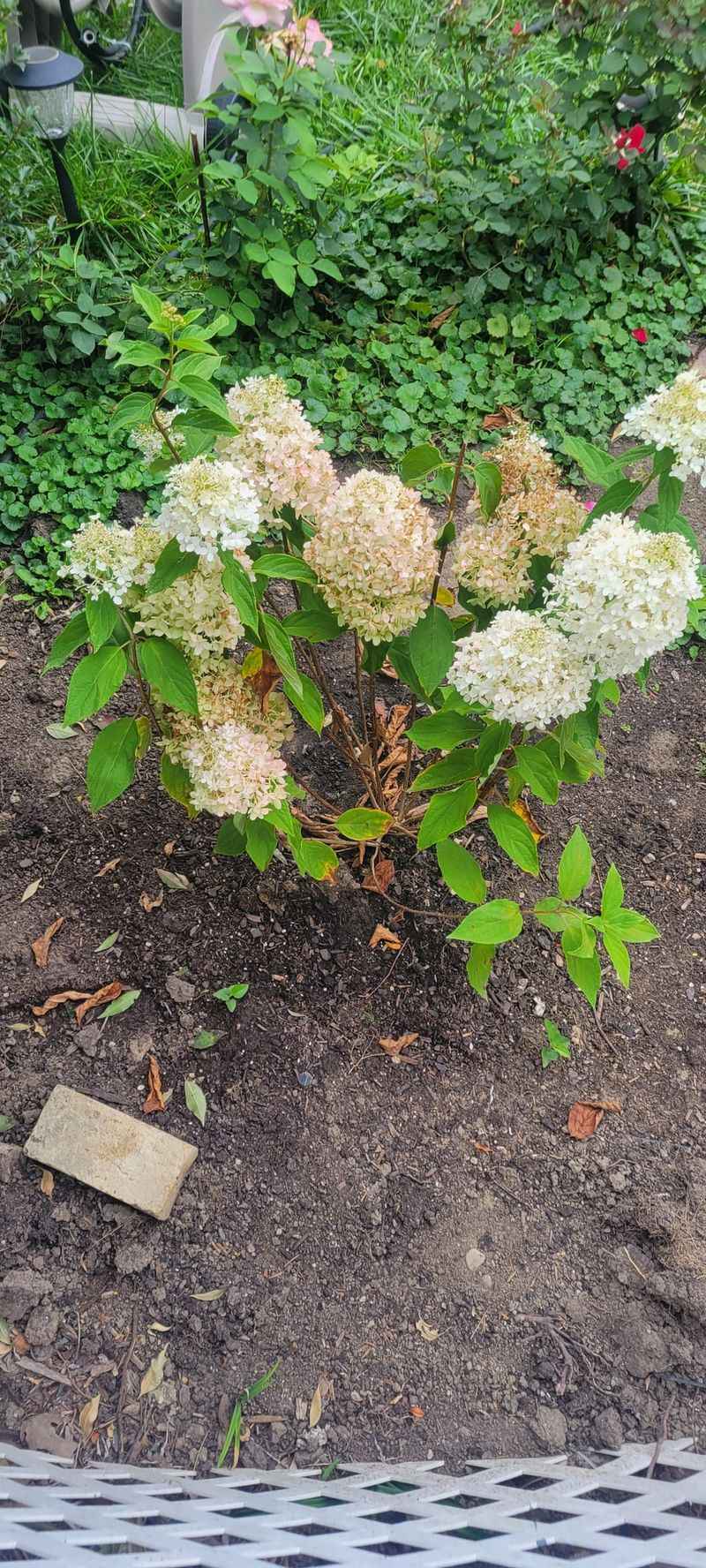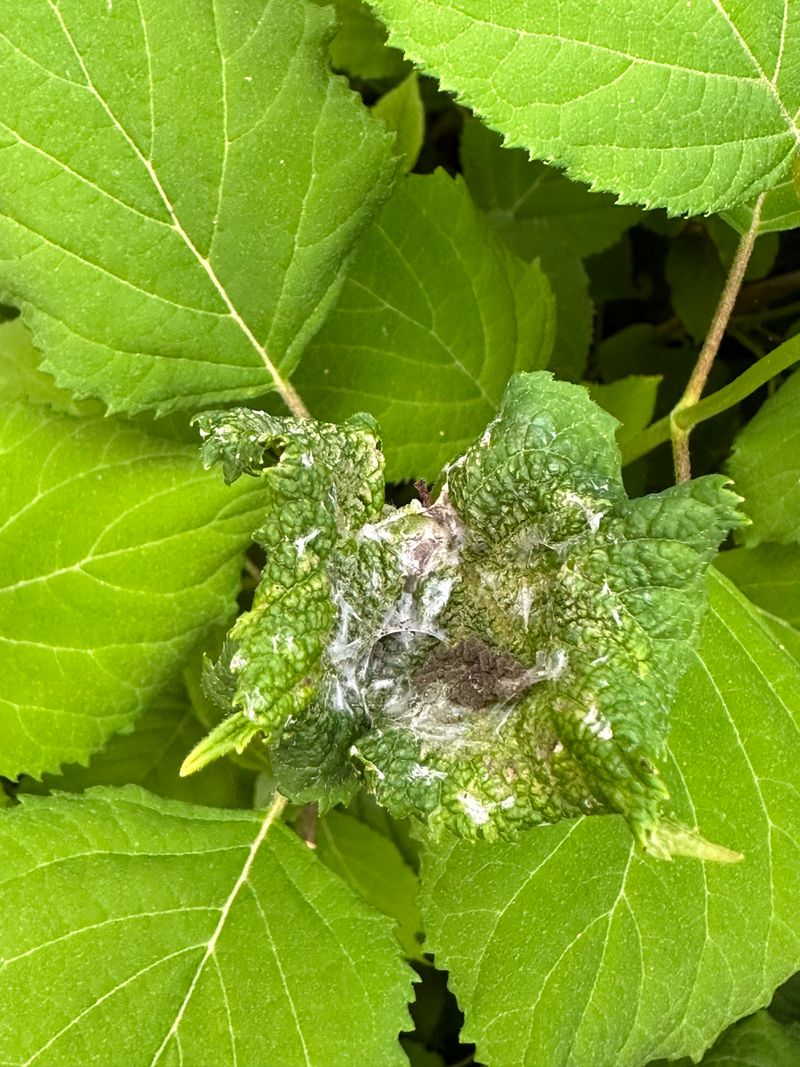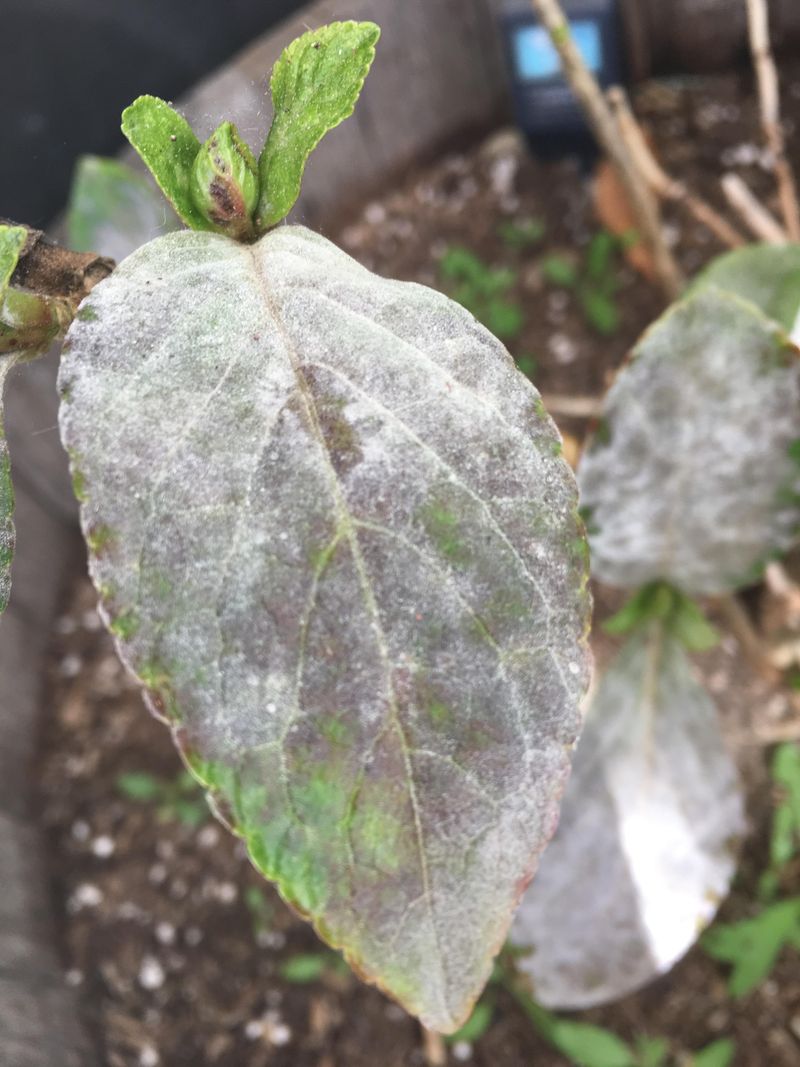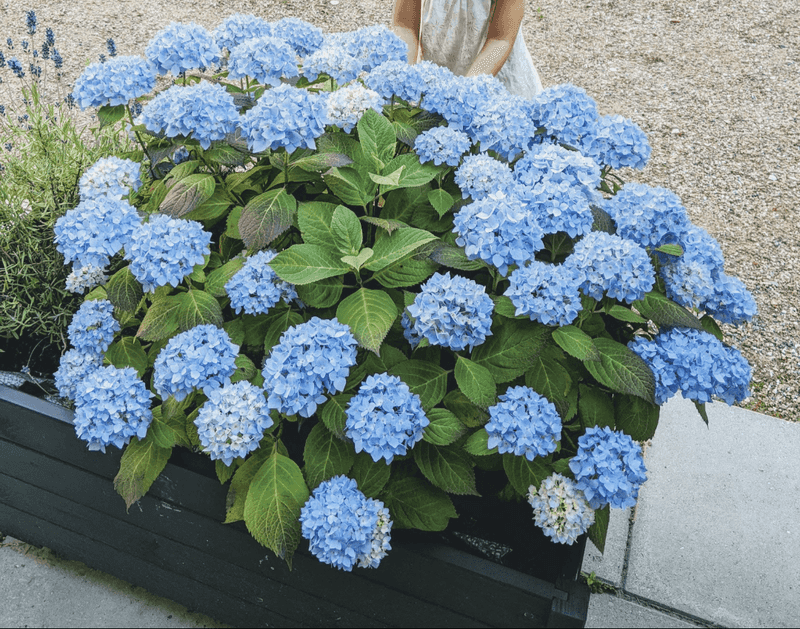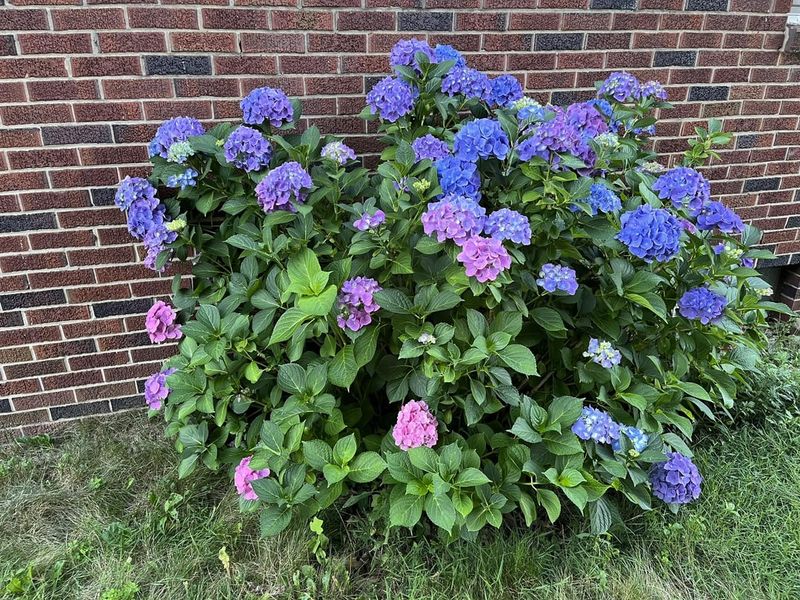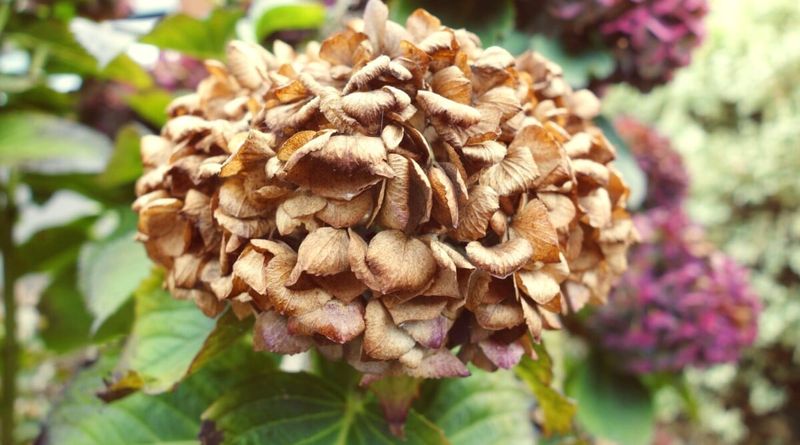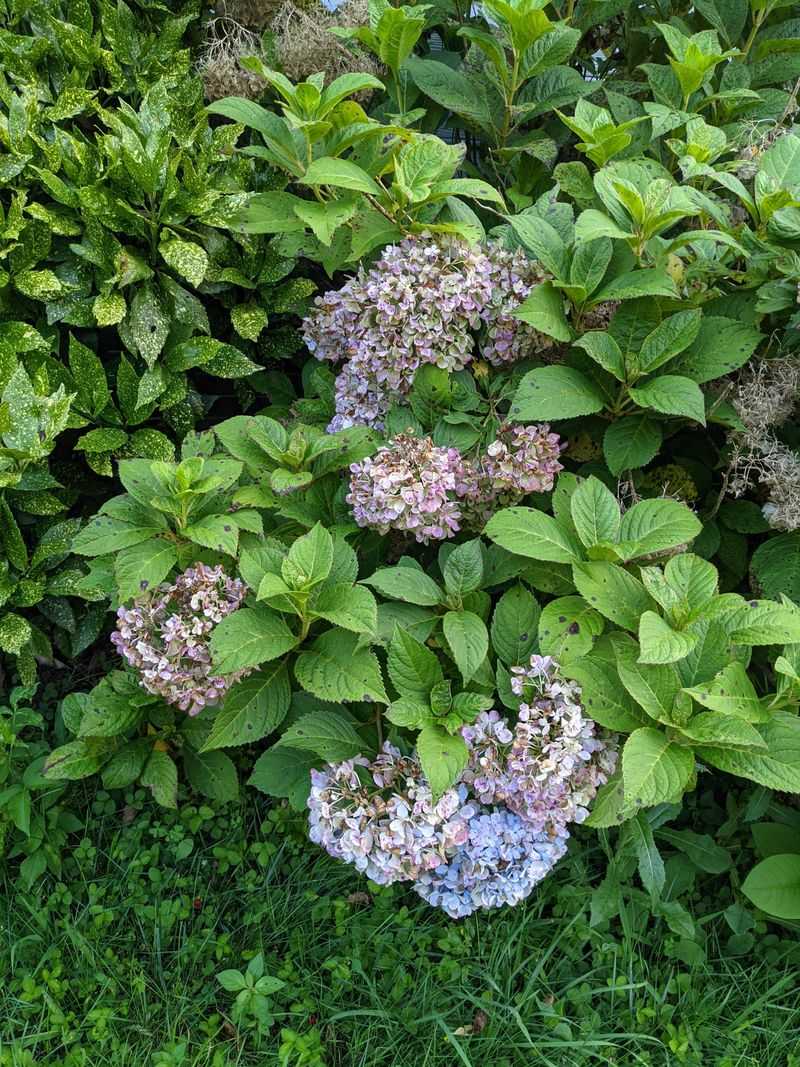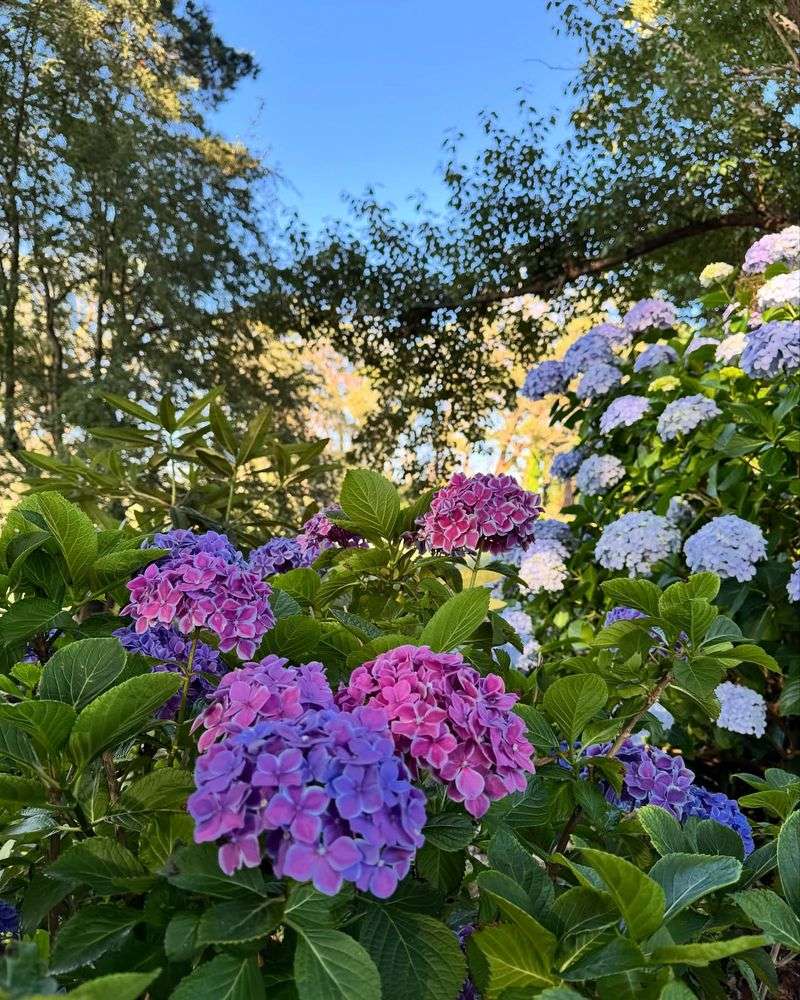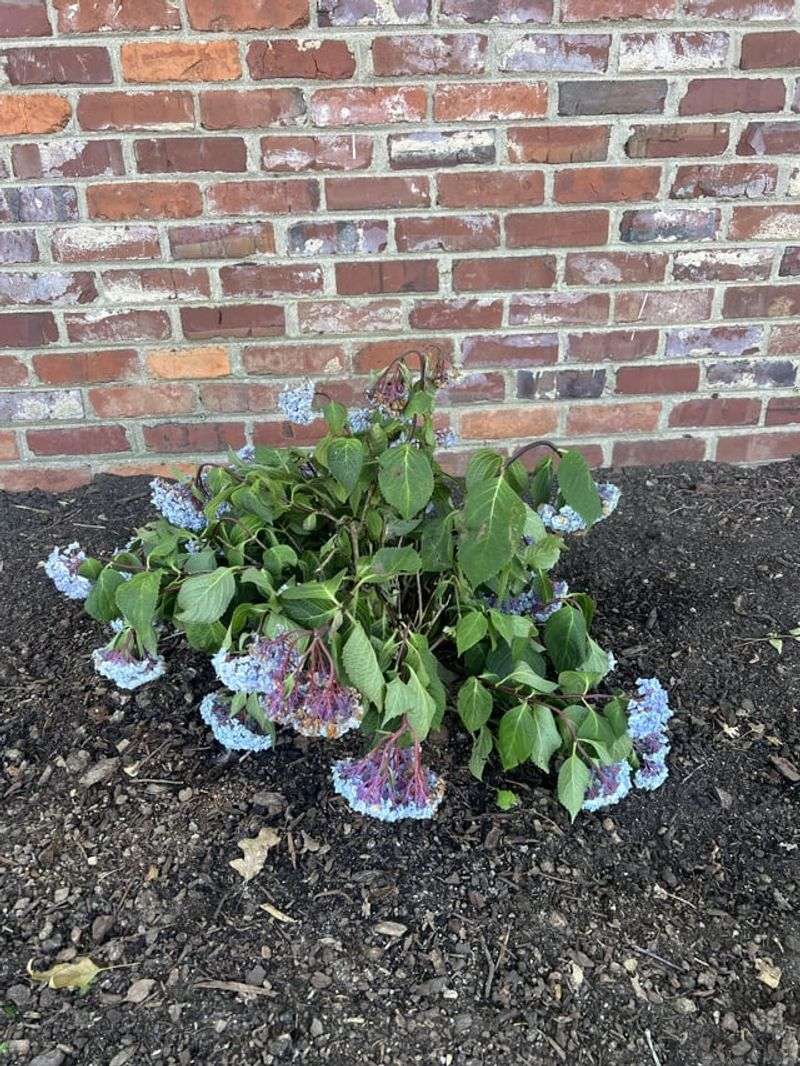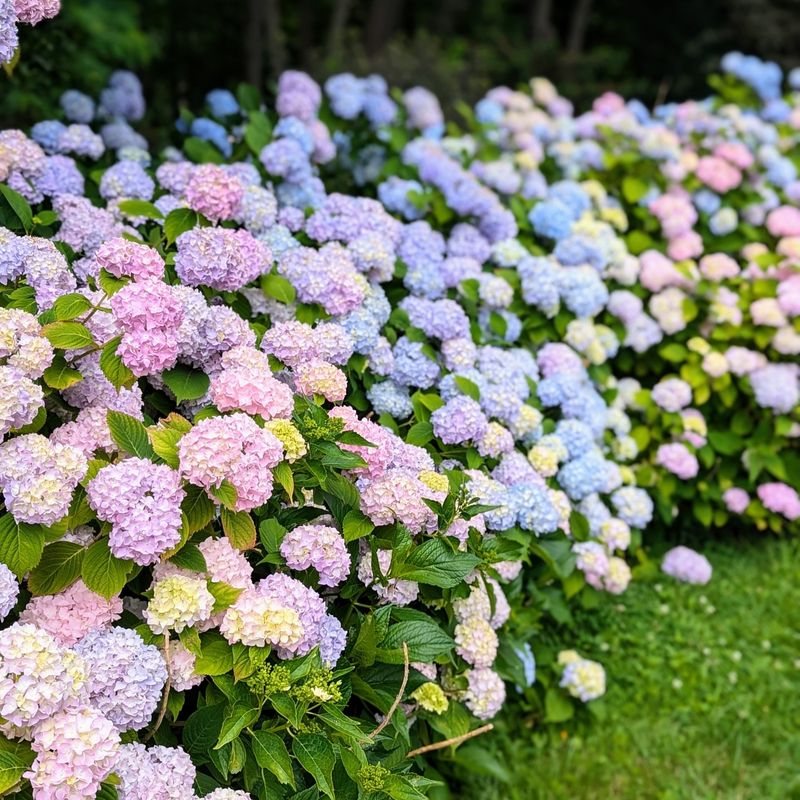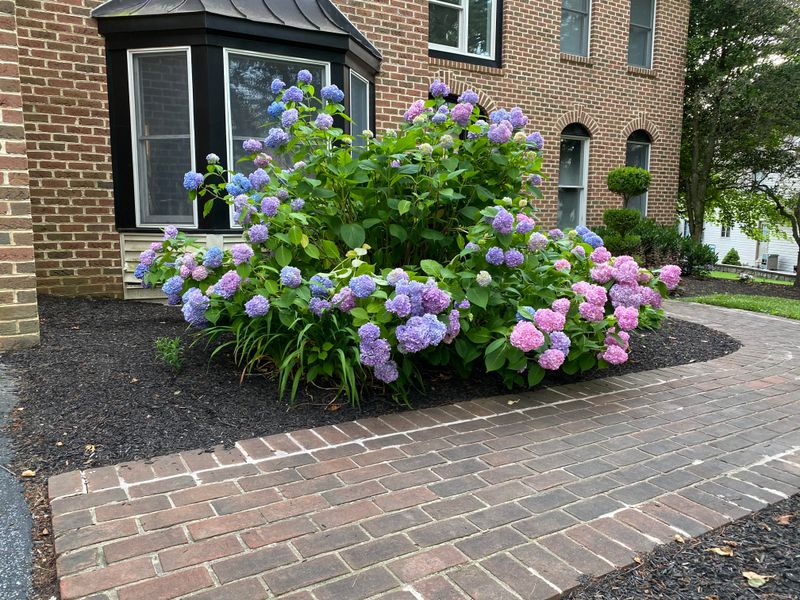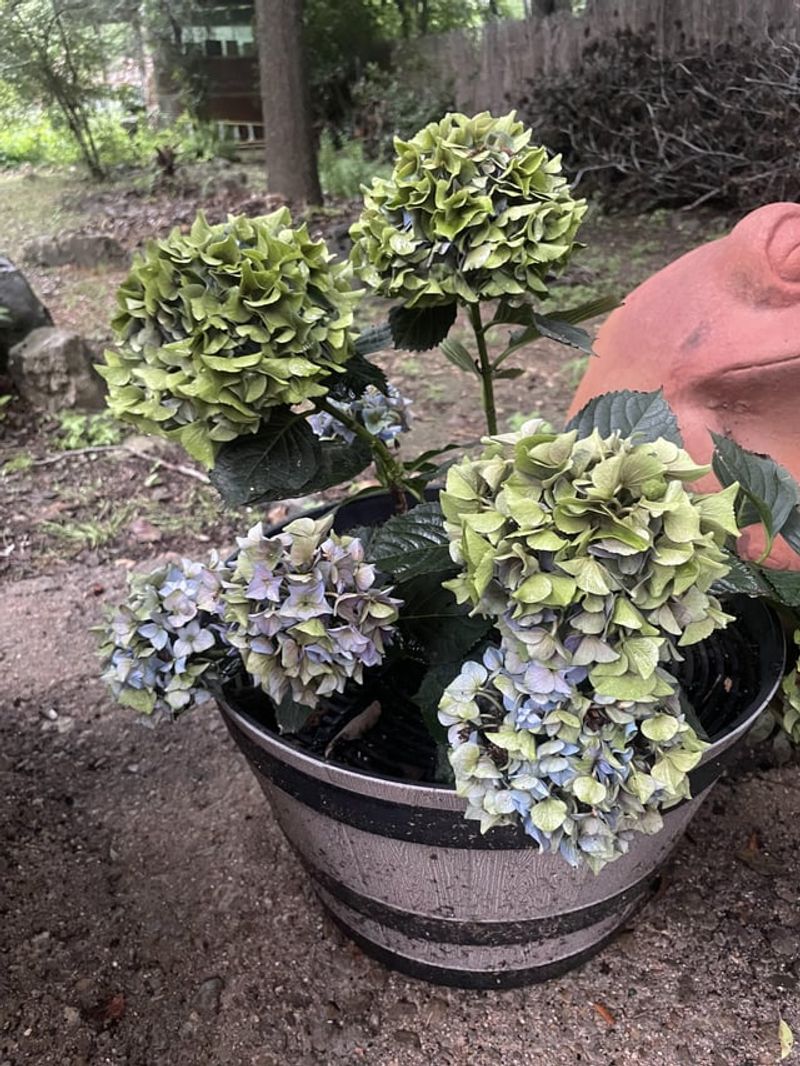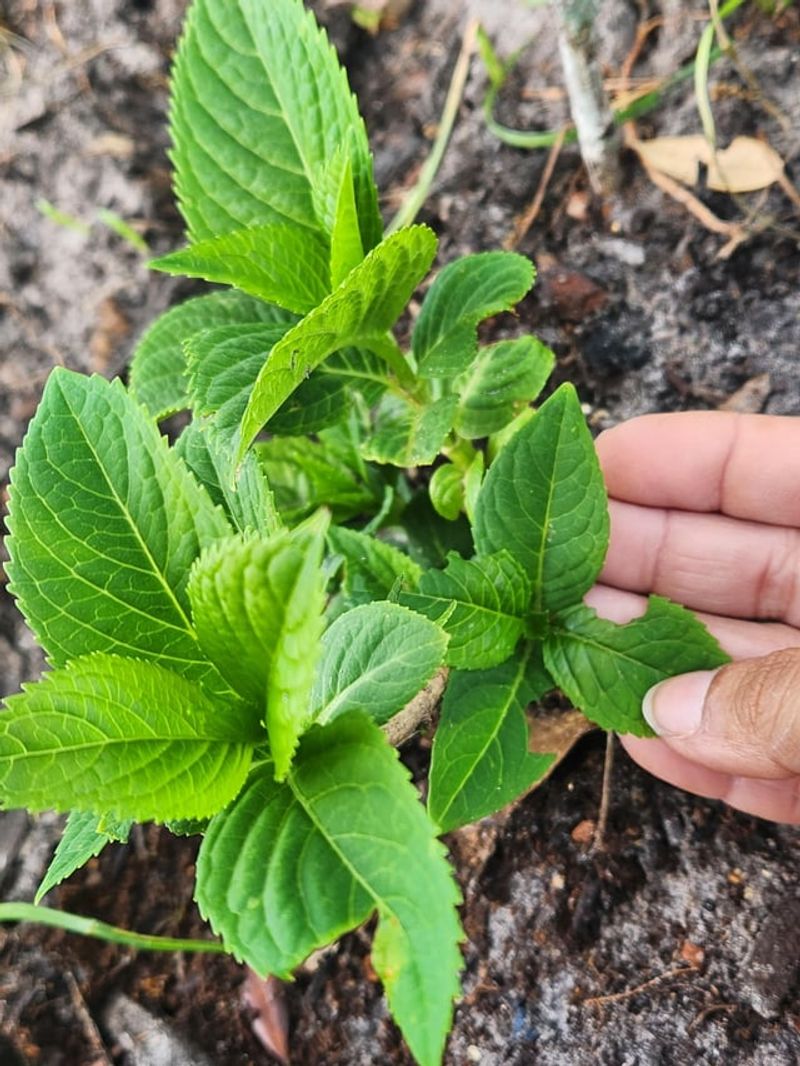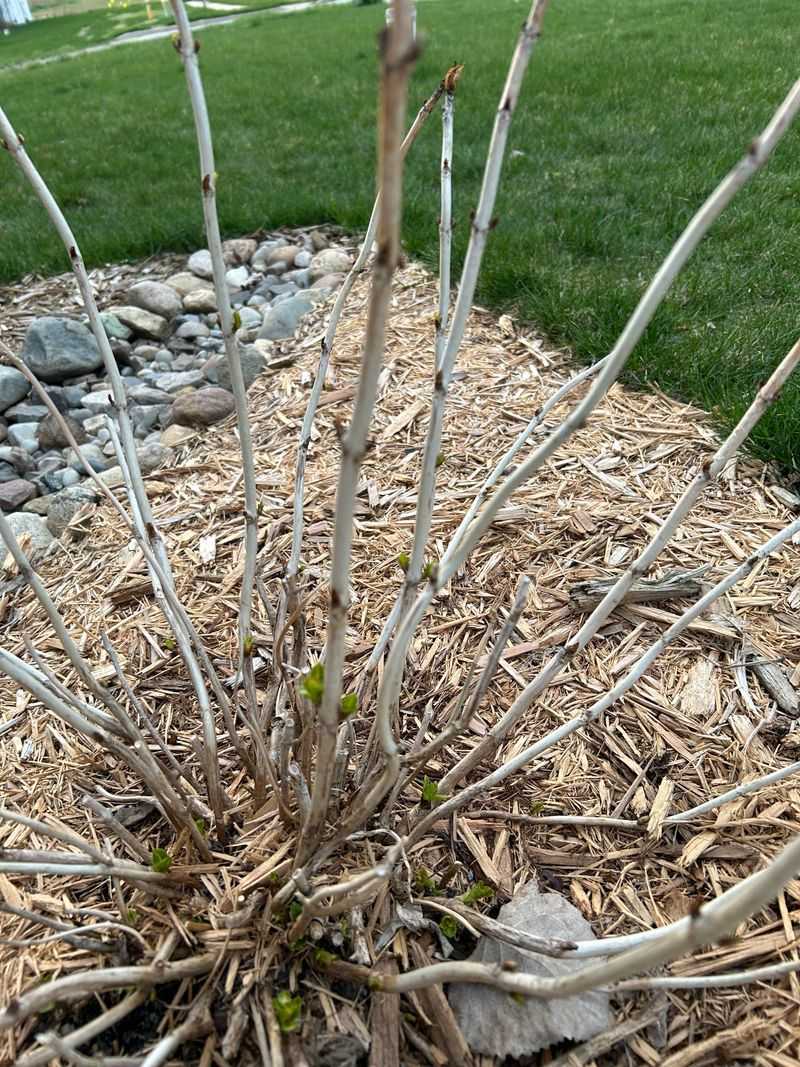Hydrangeas may look effortless in bloom, but July brings hidden stress. From scorching heat to watering slip-ups, this month can make or break your blooms.
Here are 10 reasons your hydrangeas might be struggling—and 7 proven ways to bring them back to life.
1. Heat Stress Hits Hard
Those droopy leaves and fading blooms? Classic signs of a hydrangea suffering from July’s scorching temperatures. When thermometers climb above 85°F, these moisture-loving plants simply can’t keep up with water loss through their large leaves.
The plant’s natural response is to conserve energy by wilting. Prolonged heat exposure damages the delicate cell structures in both flowers and foliage, causing that sad, limp appearance that makes gardeners worry.
2. Inconsistent Watering Cycles
Hydrangeas develop a drinking problem in July – they’re either parched or drowning! Their shallow root systems need consistent moisture but hate being waterlogged. Summer vacation schedules often disrupt regular watering routines.
One day of severe dryness can set your plants back significantly. The large leaf surface area loses water rapidly through transpiration, creating a constant moisture demand that’s difficult to satisfy during hot spells.
3. Soil Nutrients Deplete Rapidly
By July, your hydrangeas have likely used up much of the fertilizer applied in spring. The heavy flowering process demands significant nutrients, leaving plants struggling to maintain their show-stopping blooms without fresh fuel.
Signs of nutrient deficiency include yellowing leaves, smaller flowers, and weaker stems. Potassium and phosphorus shortages particularly affect bloom quality and plant vigor during the peak summer growing season.
4. Afternoon Sun Scorches Petals
Morning sunshine? Lovely. Afternoon sun in July? Plant torture! Those beautiful hydrangea petals weren’t designed to handle intense afternoon rays, especially between 2-5 PM when solar intensity peaks.
The delicate tissues literally cook under excessive sun exposure. What starts as slight browning along petal edges quickly progresses to fully browned, crispy blooms that no amount of water can revive.
5. Pest Populations Explode
July marks peak season for hydrangea-loving pests. Spider mites thrive in hot, dry conditions, while aphids multiply at astonishing rates, both sucking vital juices from leaves and stems.
Japanese beetles emerge hungry and ready to skeletonize foliage. Their feeding frenzy leaves behind lacy, damaged leaves that can’t photosynthesize properly. The combined stress from multiple pest attacks weakens plants precisely when they’re already battling summer heat.
6. Fungal Diseases Flourish
Summer’s humidity creates the perfect breeding ground for powdery mildew and leaf spot diseases. These fungal problems spread rapidly across hydrangea foliage in July, especially when leaves remain wet overnight.
The white powdery coating or dark spotted lesions aren’t just cosmetic issues. They interfere with photosynthesis and weaken the entire plant. Overhead watering in late afternoon practically guarantees fungal problems will develop within days.
7. Poor Air Circulation Compounds Problems
Hydrangeas planted too close together become trouble zones by July. The lush spring growth now creates a dense thicket where air barely moves, trapping humidity and creating perfect conditions for diseases.
Stagnant air pockets between crowded plants prevent foliage from drying properly after rain or morning dew. The resulting damp microclimate encourages fungal spores to germinate and spread rapidly throughout your hydrangea display.
8. Soil pH Shifts With Summer Rain
Those sudden color changes in your hydrangeas? Blame July’s unpredictable rainfall patterns. Summer downpours can temporarily alter soil pH, especially in containers or newly planted beds without stable soil chemistry.
Blue hydrangeas might develop purple or pink edges when acidic soil becomes more alkaline. The aluminum uptake that creates blue pigmentation depends entirely on stable, acidic soil conditions. Even minor pH fluctuations visibly affect bloom colors within days.
9. Container Plants Face Extra Challenges
Potted hydrangeas suffer double jeopardy in July. Container soil temperatures soar much higher than garden beds, sometimes reaching 120°F in dark pots sitting in full sun. Root systems literally cook inside these solar heat collectors.
The restricted root zone dries out incredibly fast, sometimes requiring twice-daily watering during heat waves. Even brief periods of drought stress cause potted hydrangeas to decline rapidly, with recovery taking weeks even after proper care resumes.
10. Previous Pruning Mistakes Show Up
Those missing blooms in July? They’re the ghost of pruning mistakes past. Hydrangeas that flower on old wood (like bigleaf varieties) set their July bloom buds the previous year.
Aggressive fall or spring pruning removes these pre-formed flower buds. The plant grows beautifully green all summer but produces few or no flowers. This delayed consequence of improper timing confuses many gardeners who don’t connect last year’s pruning with this summer’s flower shortage.
11. Morning Shade Makes All The Difference
Strategic shade placement acts like sunscreen for struggling hydrangeas. Eastern exposures provide gentle morning light while protecting plants from harsh afternoon sun – exactly what these woodland-edge natives prefer.
Temporary shade solutions work wonders during July heat waves. Beach umbrellas, shade cloth panels, or even old sheets draped over supports from 11AM to 4PM can reduce leaf temperature by 10-15 degrees. Your hydrangeas will respond with visibly improved appearance within just days.
12. Deep Watering Beats Frequent Sprinkling
Forget daily sprinkles that barely wet the soil surface. Hydrangeas need thorough, deep watering that reaches their entire root zone – typically 6-8 inches down.
The most effective method uses soaker hoses or drip irrigation running for 45-60 minutes twice weekly. This encourages roots to grow deeper, making plants more drought-resistant. Morning watering allows foliage to dry completely before evening, dramatically reducing disease problems.
13. Mulch Is Your Moisture Ally
A fresh 3-inch layer of organic mulch works like magic for July hydrangeas. This protective blanket keeps soil temperatures up to 20 degrees cooler while slowing evaporation from the root zone.
Shredded hardwood or pine straw makes ideal hydrangea mulch. Keep it several inches away from stems to prevent rot issues. As organic mulches break down, they gradually improve soil structure and fertility – a bonus benefit beyond the immediate moisture retention.
14. Mid-Season Feeding Boosts Performance
July calls for a gentle nutritional boost after the initial flowering push. Unlike spring’s high-phosphorus fertilizers, summer feeding should focus on balanced nutrition with slightly higher potassium to improve heat tolerance.
Water-soluble fertilizers at half-strength work beautifully as a mid-season pick-me-up. Apply during morning hours and water thoroughly afterward. Organic options like diluted compost tea provide slow-release nutrition that won’t burn stressed plants during hot weather.
15. Deadheading Extends Blooming Season
Those faded flowers aren’t just unsightly – they’re energy vampires! Removing spent blooms redirects the plant’s resources toward producing new flowers rather than developing seeds.
Proper deadheading technique makes all the difference. Cut just below the flower head to the first set of healthy leaves. For reblooming varieties like Endless Summer, this simple practice can stimulate additional bloom cycles well into September.
16. Pest Control Needs Consistency
Winning the summer pest battle requires vigilance rather than chemical warfare. Strong water sprays directed at leaf undersides every few days physically remove spider mites and aphids before populations explode.
Insecticidal soap applications work for stubborn infestations without harming beneficial insects. For Japanese beetles, manual removal in early morning when they’re sluggish proves surprisingly effective. Their drowsy state makes them easy to knock into soapy water.
17. Selective Pruning Improves Airflow
Strategic summer trimming can rescue crowded hydrangeas without sacrificing flowers. Removing 25% of the interior stems at their base creates crucial breathing room within the plant’s center.
Focus on removing crossed branches, weak stems, and any obviously diseased foliage. This selective approach maintains the plant’s natural shape while dramatically improving air circulation. The improved ventilation reduces humidity around leaves, making conditions less favorable for fungal spores.

